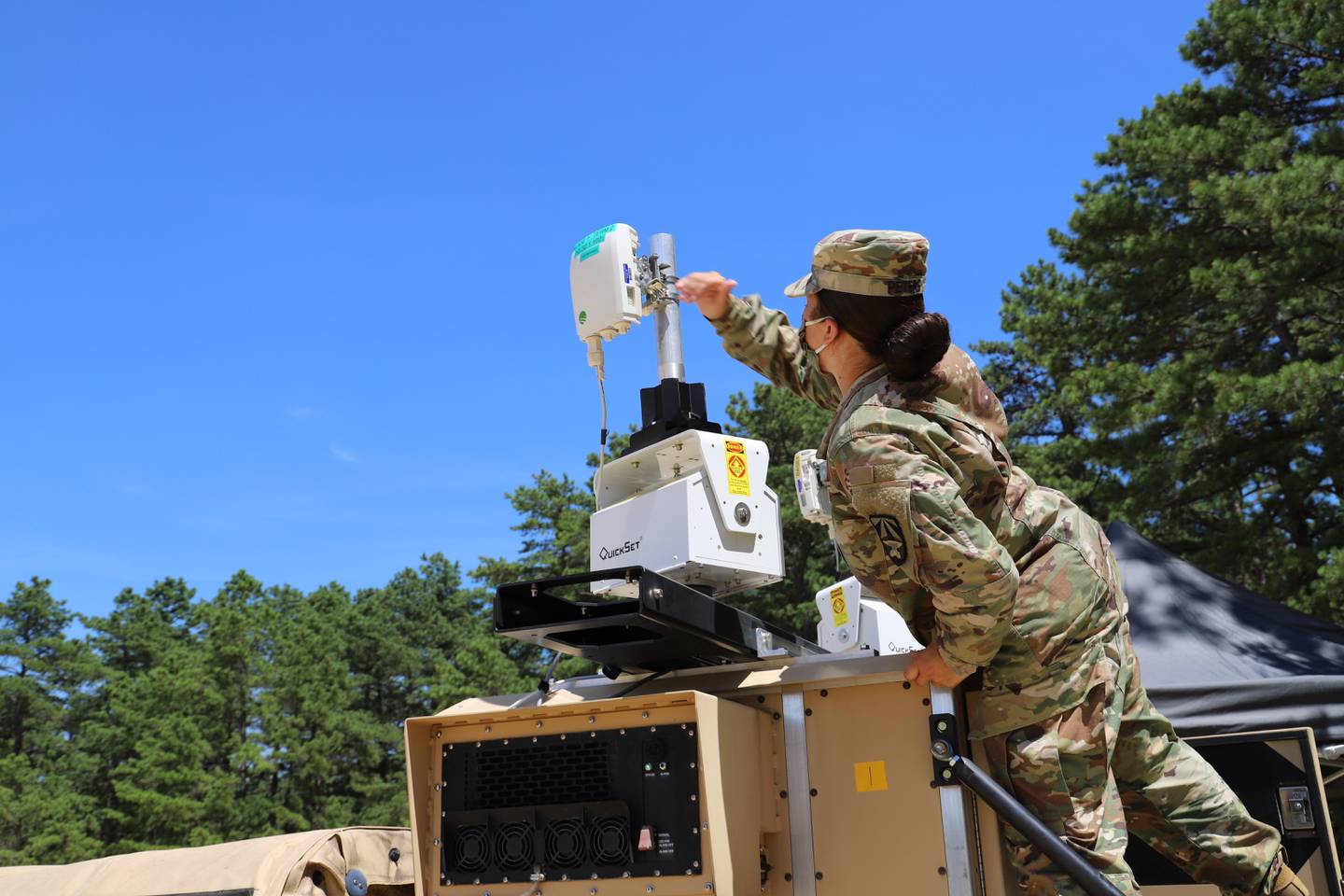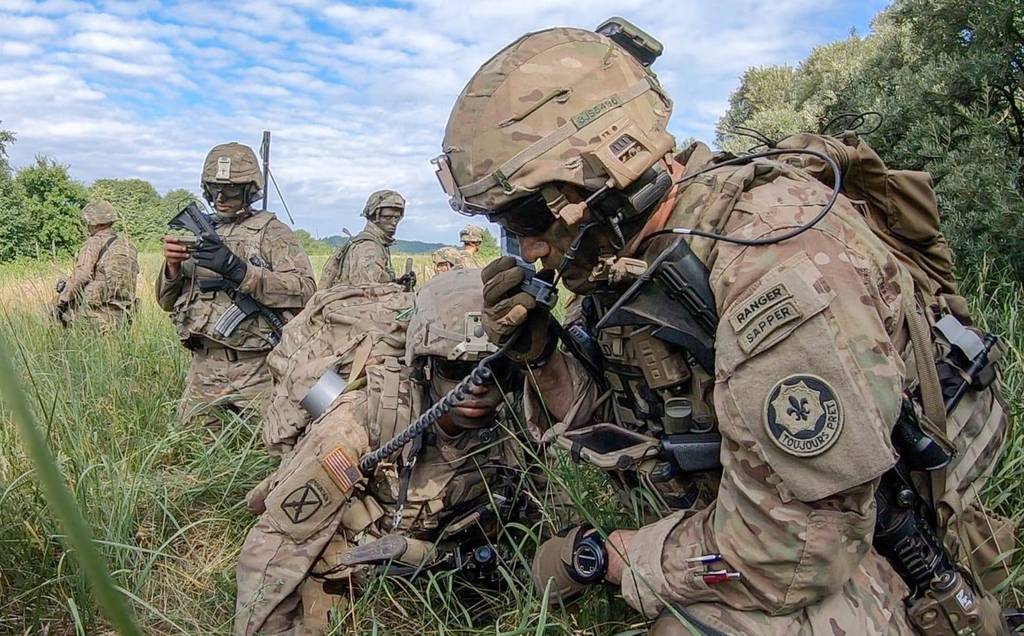WASHINGTON — The Army has released its unified network plan, which aligns various modernization efforts to provide a network the service needs if it’s to share data from the enterprise to the tactical sphere in support of multidomain operations.
The plan, published Oct. 8, outlines five lines of effort:
- Establish the unified network to enable multidomain operations.
- Posture the force for multidomain operations.
- Security and survivability.
- Reform processes and polices.
- Network sustainment.
The global nature of conflicts — physical and digital alike — against nation states will require forces to have ready and resilient access to data from anywhere. That means unifying the Army’s tactical and enterprise network, and developing a seamless global communications, Lt. Gen. John Morrison, deputy chief of staff of the Army for G-6, told C4ISRNET.
“We want the ability of our tactical formations to be able to rapidly deploy anywhere in the world, immediately plug back into the unified network, and have the data and information that they need to conduct operations,” he said in a Sept. 22 interview. “It’s not only data and information; it’s access to strategic, operational and tactical effects — all three of them being able to be applied at the time and place of the maneuver commander’s choosing.”
Morrison explained that networks were previously theater-centric and lacked a global focus. Because of that, force transitions from one theater to another could prove difficult from a network perspective. Some of that was due to bureaucratic challenges, some of it was technical and related to theater architectures.
As a result, the Army has devised what it is calling the unified network — an attempt to align tactical networks for forces directly on the battlefield and the enterprise systems used by stationary forces at installations.
For the last four years, the service has been undergoing an aggressive modernization effort to improve its tactical network, but the Army is now taking that same vigor to linking its enterprise strategic systems to tactical forces to better share data.
The new plan outlines three phases of modernization beginning in the near term all the way out to 2028 and beyond.
In the near term – between now and 2024 – the goal is to begin establishing the unified network. Work in this sphere has already begun with tactical network modernization but also involves a standardized secure architecture based upon zero trust, inserting emerging technologies such as 5G and software-defined capabilities, and movement toward cloud infrastructures, among other activities.
The phase ends with the creation of a standardized and integrated security architecture that sets the foundation going forward, the plan says.
The midterm, from 2025-2027, focuses on “operationalizing” the unified network and begins with convergence of the tactical and enterprise network capabilities.
Other efforts involve the completion of a Department of Defense Information Network operations modality that enables defense of the network.
Morrison described this DoDIN framework as involving operations, maintenance, configuration and security of the network from the tactical edge to the installation level.
Certain organizational designs or force structure changes the Army made and is continuing to evolve created efficiencies. This primarily involves the creation of expeditionary signal brigades-enhanced, which support units that don’t have organic communications capabilities. These groups could include military intelligence battalions, chemical battalions, engineering battalions or air defense artillery branches.
Morrison described these units as “significant combat multipli[ers],” and said the concept is proven.
The Army is currently in the process of moving beyond the initial two battalions, adding more overseas.
The Army has also been able to reinvest personnel it saved from the ESB-Es into the DoDIN operations framework to more intently focus on the operations and defense of the network.
“We are reinvesting personnel to reenforce our regional cyber centers so we have that theater-level capability. We are reinvesting those personnel efficiencies into Army Cyber and NETCOM [Network Enterprise Technology Command] to establish that global DoDIN ops capability that will nest over the top of the theater structures. We are transforming our theater tactical signal brigades into corps signal brigades to support corps maneuver and provide that DoDIN ops for the corps,” Morrison said.
“We’re doing the same with our theater strategic signal brigades, and they are now becoming theater signal brigades, but with that enhanced DoDIN ops capability to really be able to do the command and control of their formations both at the installation and theater level but also the organic tactical formations that are assigned to them.”
The midterm also involves the establishment of a hybrid cloud that accelerates artificial intelligence and machine learning.
The far term involves continuous modernization, as officials have explained the network will never be final given the Army will always strive to insert new and emerging technologies.

When it comes to testing these new concepts and techniques, Morrison said, operations will inform much. However, from an experimentation standpoint, the Army will use events, such as Project Convergence, from which to take lessons.
The Army is also working to align the unified network efforts with its Multi-Domain Task Force and military exercises to determine if the service is on the right path with modernization efforts.
“I think we have a really good blend of real-world operations that will drive learning demands and experimentation. And between the two of them, I think it’s really going to inform us as we move forward,” Morrison said.
However, he acknowledged that while the unified network approach is meant to lead the Army’s effort to become what senior leaders call “multidomain capable” by 2028, there is no set end state for network modernization efforts. Rather, it will be an ever-evolving process that will adjust with emerging technology trends.
“We want to set the foundation so we can incrementally modernize over time. For an enterprise as large as the U.S. Army, where we have over a million users on the network, to sit there and think that we’re going to field all the way across that one common solution and then have that one common solution for 10, 15 years is a misnomer,” Morrison said. “Having that foundation so we iteratively modernize over time is absolutely critical.”
Mark Pomerleau is a reporter for C4ISRNET, covering information warfare and cyberspace.








